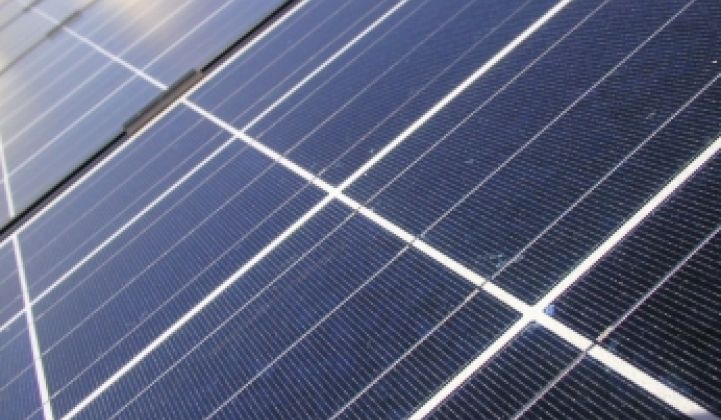China only announced its first national solar subsidy program two months ago, and already it has reportedly received a whopping number of applications.
Suntech Power Holdings said Thursday it has submitted applications worth 179 megawatts by the May 15 deadline for the first round. Citing unnamed sources in Taiwan, DigiTimes reported that the Chinese government received about 500 megawatts of applications by the same deadline.
In fact, Suntech's proposed 1.5-megawatt project in Huai'an City could be one of the first to receive the subsidies, said CEO Zhengrong Shi in a conference call with analysts Thursday to discuss the company's first-quarter earnings. Suntech is primarily a solar panel maker, but it is building a project development business to engineer and install solar energy systems in China and the United States.
"We believe we are the best-positioned company in China to access this opportunity," Shi said, citing the company's growing experience in project development and its deal to provide 130 kilowatts of solar panels for the Bird's Nest Stadium for the 2008 Olympics and its product lineup. Suntech has a team of about 100 employees working on engineering and installing solar energy projects in China, said Steve Chadima, vice president of external affairs at Suntech.
China announced the subsidy program in March, and promised to provide up to 20RMB ($2.93) per watt for solar energy systems on buildings. The systems would have to be 50 kilowatts or larger, and they could be mounted on the rooftop or in some way become part of a building façade. Projects that are integrated into the building would get higher subsidies than simpler, rooftop installations.
The announcement drew mixed reactions from the industry. The government hasn't announced details that would help investors and companies gauge the program's impact, such as whether there would be a ceiling for the amount of solar power that could be installed and what rules would be used to evaluate the applications.
"It seems unlikely that such generosity would apply to a large number of projects, especially when it becomes clear that projects can be built much more cheaply now than they have been in the past, due to module oversupply," said Jenny Chase, manager of Solar Insight Service at New Energy Finance.
The program would promote solar energy installation in a country that makes a lot of solar panels and exports them mainly to Europe. After the crash of the Spanish solar market thanks to the government's decision to shrink its solar incentive program late last year, solar companies worldwide have been eagerly looking for the next hot markets, which typically involve generous government aid.
But whether China's program would provide the same kind of boost offered by Spain's previous solar policy is unclear. Spain's old policy created a boom for panel makers from Asia, the United States and of course Europe, and the incentives were guaranteed prices for solar electricity, not money for installing solar energy systems. Analysts believe that the Chinese government is creating the program mainly to support the domestic solar equipment makers, which have been hit hard by the change in Spain's policy and the global economic downturn. Large companies also might win government approval more easily than smaller ones.
Tom Werner, CEO of SunPower, a solar panel maker and project developer in San Jose, Calif., expressed some skepticism about China's program when he spoke at a panel hosted by the Silicon Valley Leadership Group on Wednesday.
"In theory there will be a domestic market, but the challenge is whether it will be dominated by incumbent companies," Werner said.
Suntech certainly would have a home-court advantage. But it should also have plenty of competition from within China. Other better-known Chinese solar panel makers include Trina Solar and Solarfun.
Shi said provincial governments and the National Development and Reform Commission, which sets energy policy, are working on other solar incentives and could announce them soon.
With a solar cell production capacity of 1 gigawatt, the company is one of the largest solar companies worldwide. The economic downturn means Suntech hasn't been able to make full use of its capacity, however. Suntech expects to ship 600 megawatts to 700 megawatts of products this year.
The company reported $315.7 million for the first quarter revenue, a 23.8 percent drop from a year ago. It posted $1.8 million, or 1 cent per share, in net income. Suntech missed analysts' expectations for the revenue but surprised Wall Street by posting a profit instead of a loss.
Join experts and influencers at Greentech Media's Growth Opportunities in the New PV Market: Projects, Finance and Policy in San Francisco on July 13.




